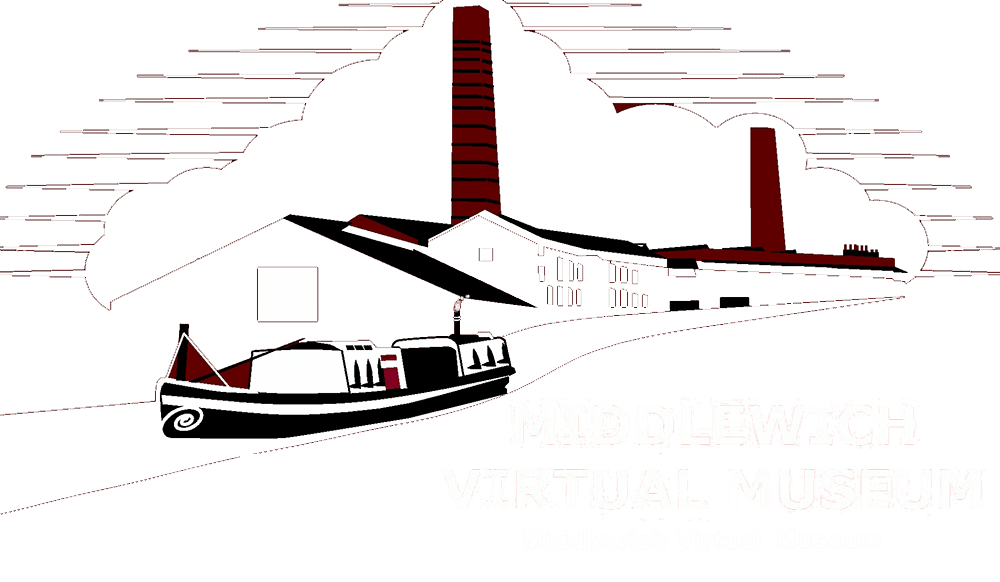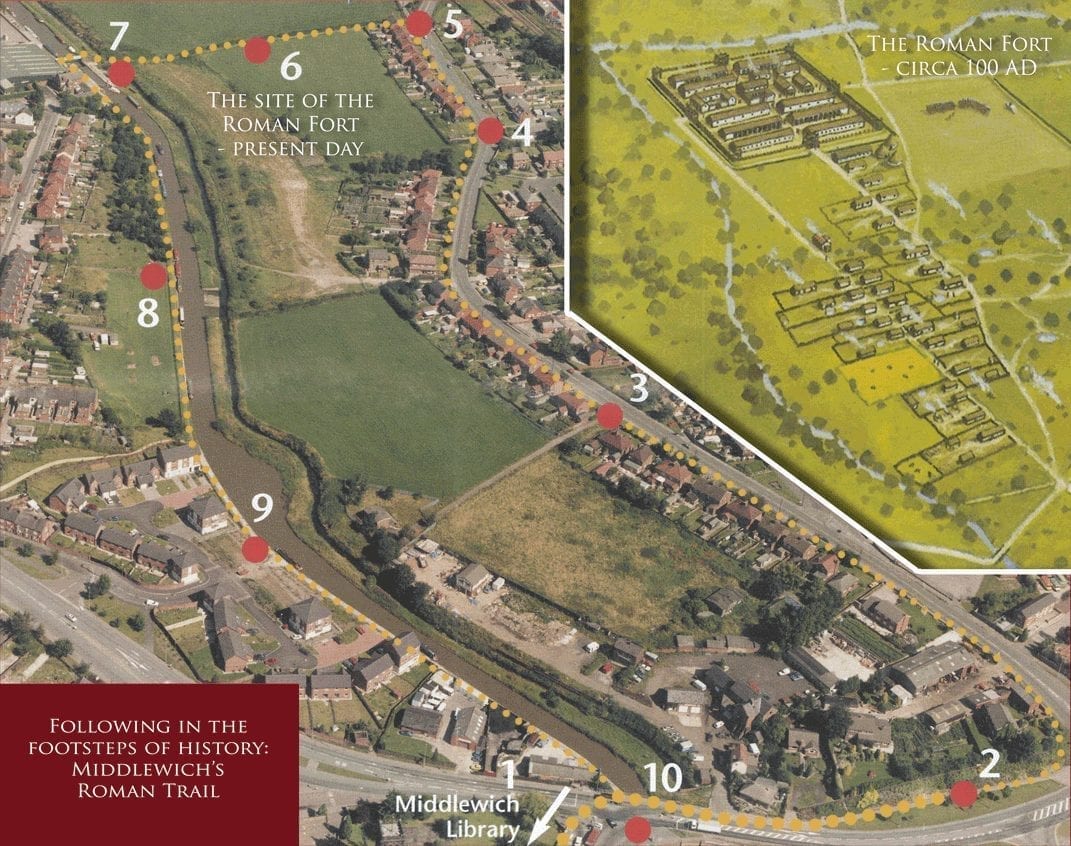- You are standing just outside of the Roman settlement, south of where King Street Roman road crosses the River Croco, Roman troops would have passed this way to and from the northern frontier between 48 and 130AD.
- This is the southern edge of the Roman settlement, around the point where the King Street Roman road crossed the River Croco. Middlewich was at the busy junction of five important Roman roads.
- Modern King Street follows the line of the King Street Roman road north to Wilderspool, near Warrington. By 150AD King Street was lined on both sides with saltworks.
- Between 48 and 68AD, the Roman Army was active in the Middlewich area and a temporary fort was built at Harbutt’s Field, At this point a side road branched off King Street towards the front gate of the fort.
- During the Roman campaigns against the Brigantes in the early 70s AD, King Street became a major military route to the north. Its course is marked by the line of trees to your right. A fort was built at Harbutt’s Filed to command the river crossing and control the local brine springs. You are standing at its south east corner.
- You are facing the front gates of the Roman fort. In plan it was like a playing card, and covered around 3.5 acres (1.4 hectares). It contained a timber headquarters building, commanding officer’s house, granaries and barrack blocks. These were enclosed by a turf rampart, timber pallisade fence and a defensive ditch. At one time it may have housed a cavalry unit of auxiliary (non-Roman) troops.
- You are looking across at the south west comer of the Roman Fort. From here you can see that the fort stood on raised ground, overlooking the River Croco.
- The Army had left Middlewich by about 130AD, and a large settlement developed alongside King Street. You are looking across the River Croco towards the civilian saltworks on the far bank. Although saltworking was the main activity, there is evidence of both leatherworking and ironsmithing.
- Around 48AD, the Roman Army moved through the area in its campaign against the rebel forces of Caratacus. A temporary marching camp was built at Harbutt’s Field. Before a bridge was built across the River Croco, it would have been crossed by a ford.
- By the 4th century AD, the main roads which met at Middlewich probably crossed the River Croco by a wooden bridge. The bridge probably stood at around this point.




